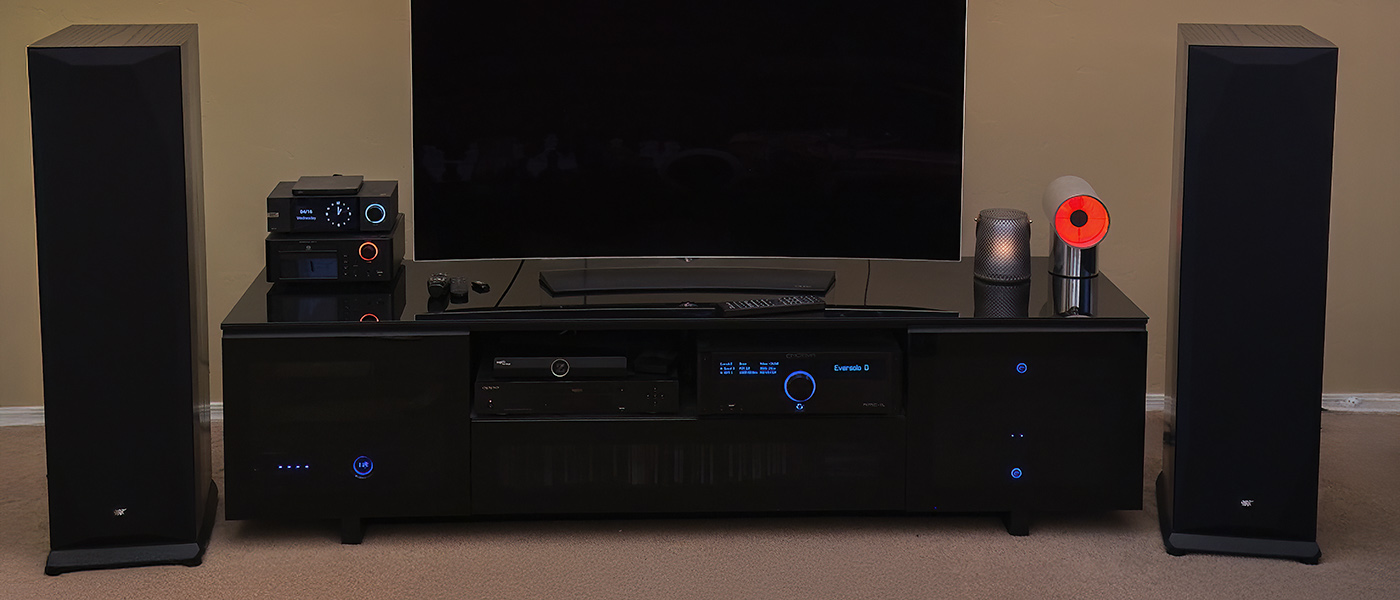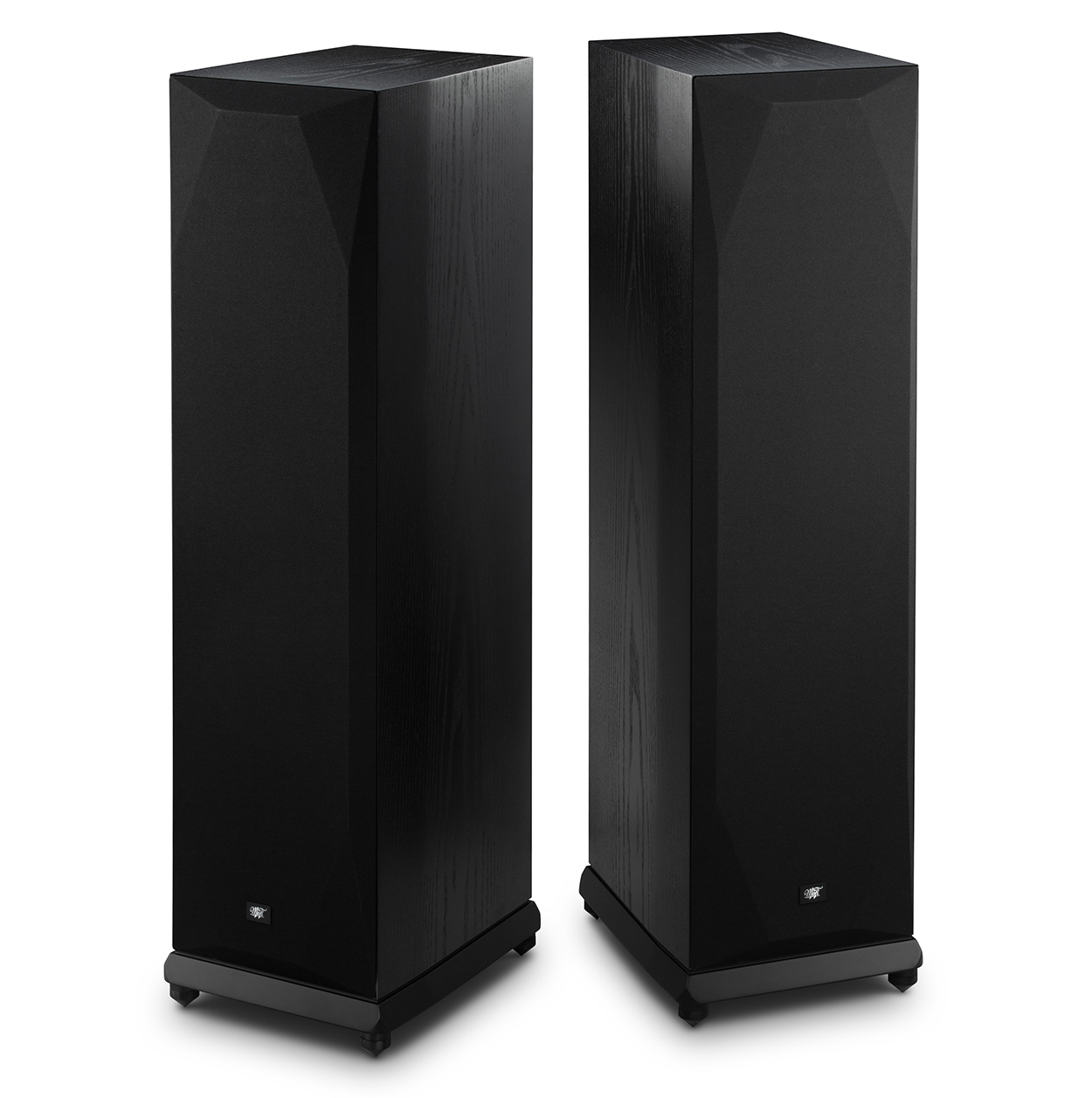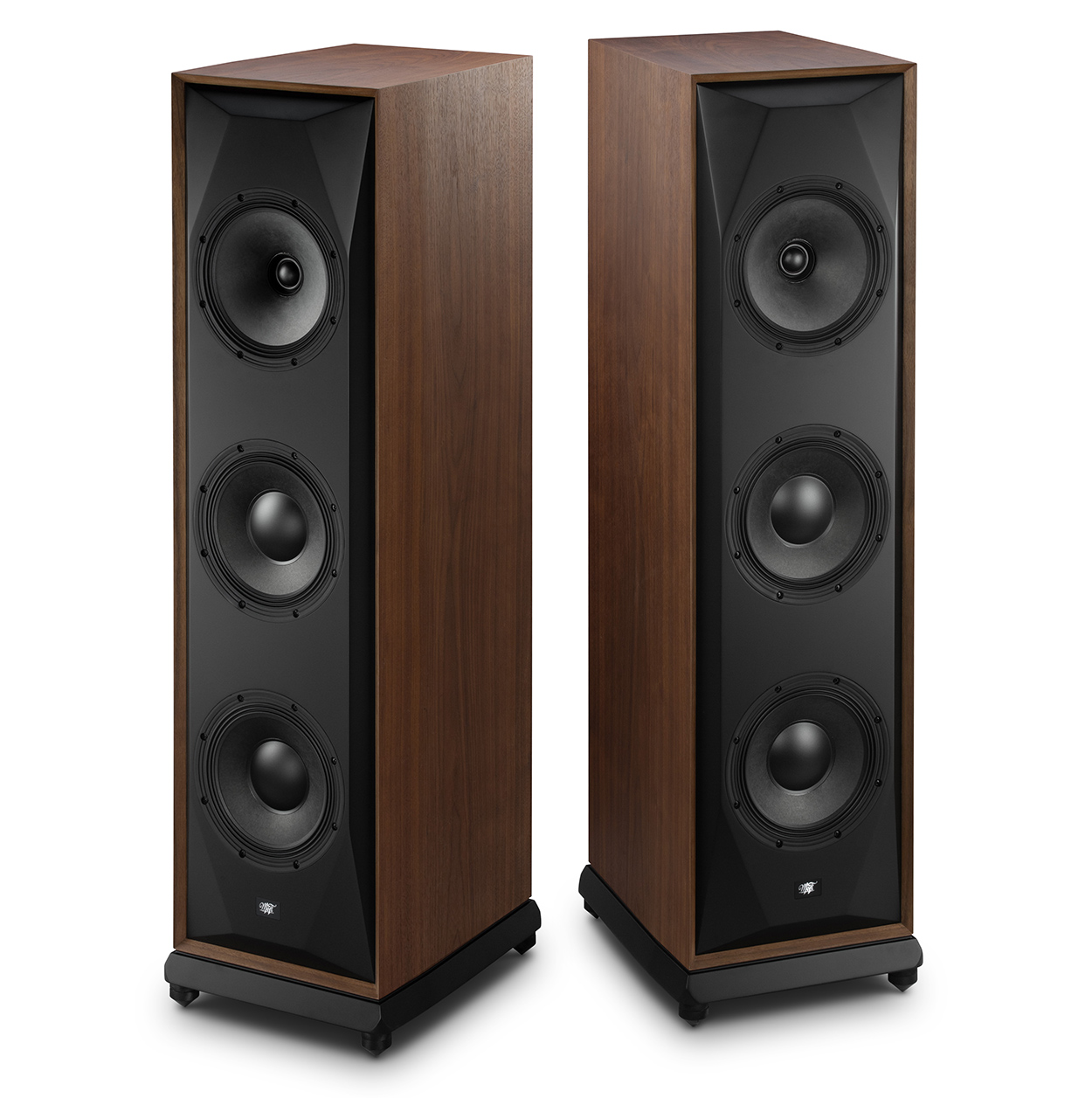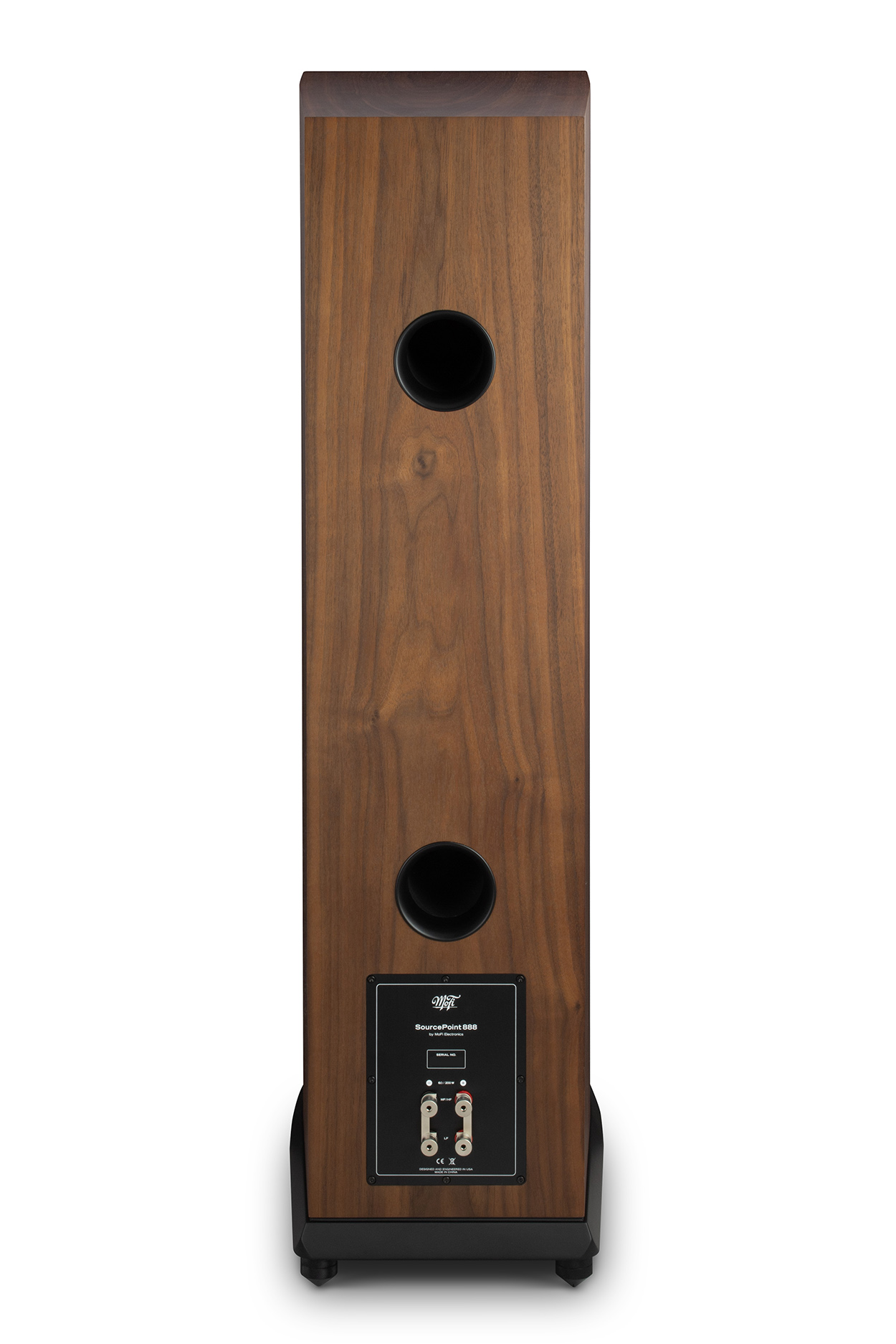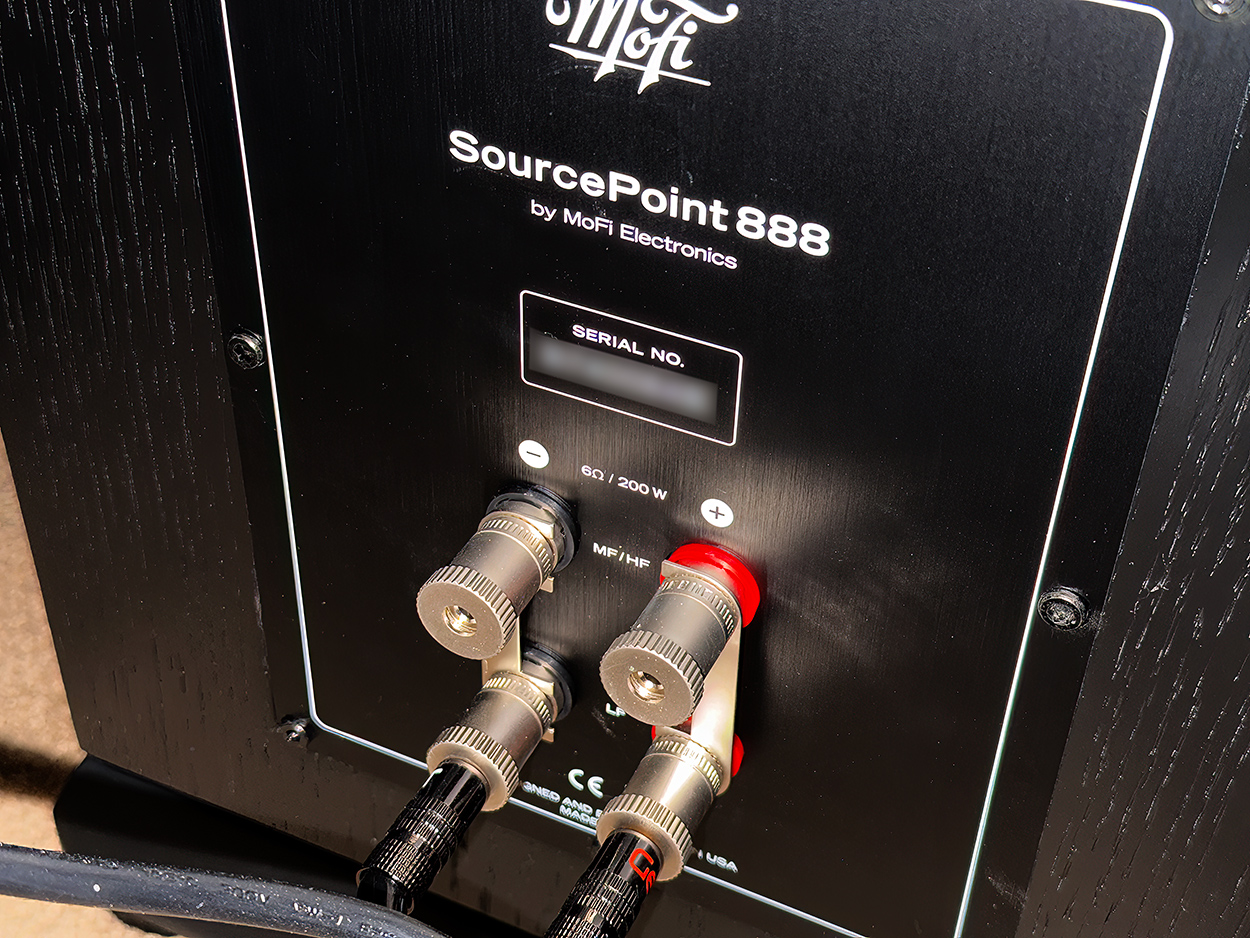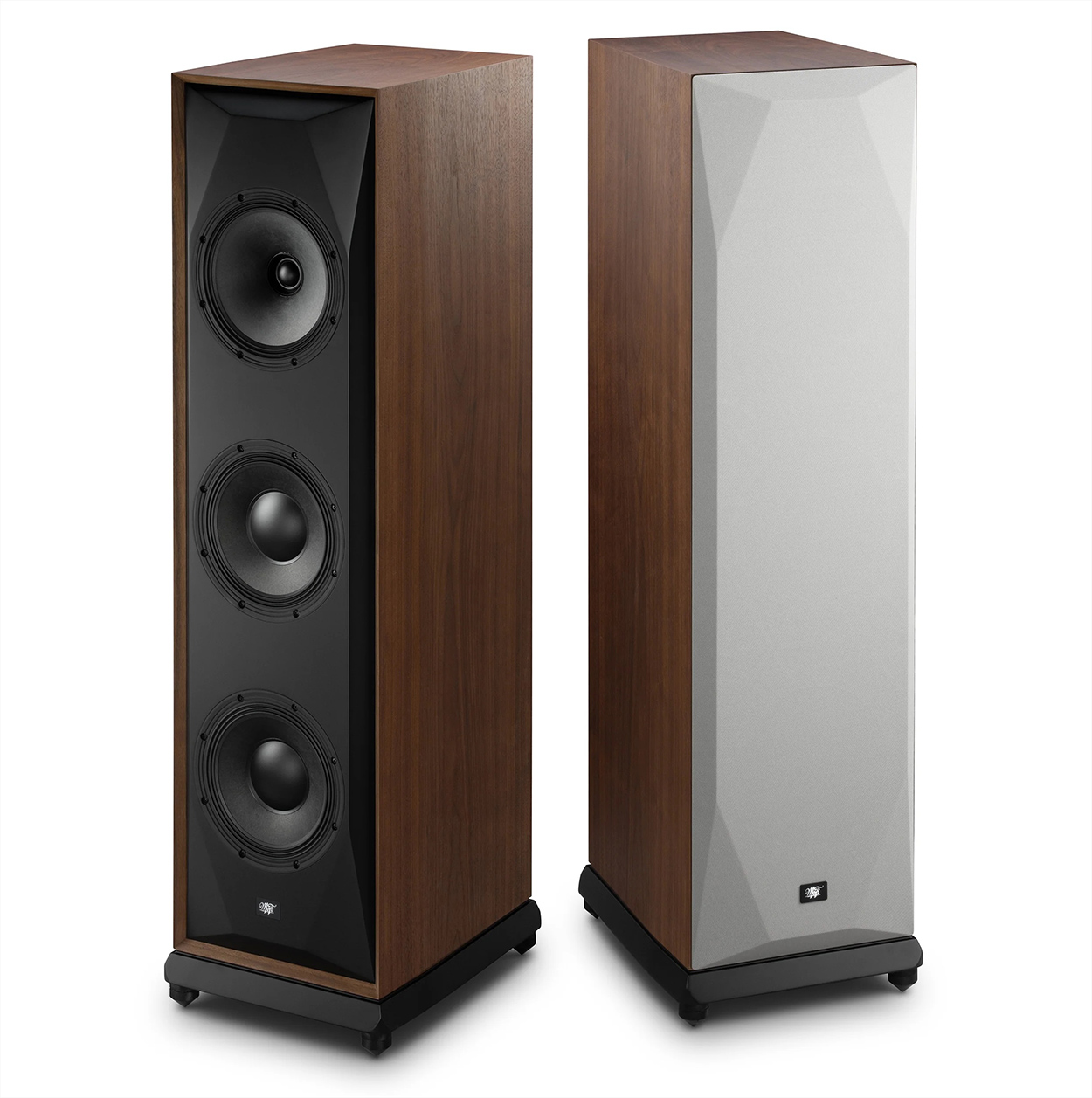Coming from iconic designer Andrew Jones, they are descended from two other Jones designs, the SourcePoint 8 and SourcePoint 10.
While at first glance, the SourcePoint 888 speakers look very similar to other floor standers, a closer look behind the grills shows some unique design points. Listening to the speakers can be breathtaking, not a word I throw around. Andrew Jones has created something very special, and all the buzz from reviewers and buyers seems justified.
MoFi SourcePoint 888 Floor-Standing Speakers
- Uncanny precision to the stereo image.
- Very deep bass that leaves you asking, “Where is the subwoofer?”
- Midrange is exemplary, making voices sound real and ‘in the room’.
- High frequencies are clean and free of distortion.
- Good flexibility in terms of placement.
- Should work well in most rooms and room sizes
- The cabinet is inert and well-braced.
- Heavy at 96 pounds each.
Speaker design is such an interesting mix of art and science. There are endless designs, with many approaches to moving air around your listening room. I’ve heard hundreds of brands and types of speakers, and all have the same goal: the realistic reproduction of music, acoustic or electronic.
A truly great speaker can be of various designs: a flat panel, an electrostatic, an acoustic suspension design with large woofers, or smaller left and right channel speakers with subwoofers to go deep. Still, the best speakers I have heard, no matter what the design decisions, all sound quite similar. They share a wide frequency response, good dynamic range, and pinpoint imaging when the recording was created with that in mind.
So, along comes Andrew Jones, a highly respected speaker designer, whose roots go back to Pioneer, KEF, Infinity, and ELAC. Now with MoFi Electronics, where he has already created two extraordinary speakers, the above-mentioned SourcePoint 8 and the SourcePoint 10. They are what I would describe as large bookshelf-type speakers, but they are best heard on stands. Listeners praised the concentric driver sound, which is distinctive and coherent. I’ll have some details on what a concentric driver is as we progress with the review.
Andrew Jones had the best description of his work:
“The SourcePoint 888 introduces a revolutionary 3-way design incorporating two newly developed 8-inch woofers alongside the refined concentric driver configuration. This synergy creates a seamless, powerful soundstage with exceptional bass extension and dynamic range. The design philosophy ensures a cohesive sound profile, where bass, midrange, and treble frequencies are in perfect harmony.”
Frequency Range:
32 Hz – 30 kHz
Nominal Impedance:
6 Ohms, 4.5 Ohms minimum
Sensitivity:
87dB/2.83V/1m
Crossover Frequency:
130 Hz, 1.6 kHz
Max Power Input:
200W
Concentric Driver:
Single 1.25″ wide roll soft dome tweeter within a Single 8” Paper Midrange Cone
Woofer:
Dual 8″ Paper Cones
System Configuration:
3-way vented box, concentric driver
Cabinet Finish:
Satin black painted baffle/satin real wood Walnut or Black Ash veneer
Dimensions (H x W x D):
Without Grill: 1070 x 320 x 410mm (42.13” x 12.6” x 16.14”)
With Grill: 1070 x 320 x 425mm (42.13” x 12.6” x 16.73”)
Weight:
96.2 lbs. / 43 kg
MSRP:
$4999.00
Company:
SECRETS Tags:
mofi, andrew jones, floor-standing speakers, concentric drivers
Secrets Sponsor
A casual look at the 888 speakers and they appear to be like any other floor-stander. But taking off the magnetic speaker grille will quickly change your view. At first glance, you’ll see what appears to be three woofers, but that’s not correct. The SourcePoint 888 is a rather unique 3-way design.
One 8-inch midrange driver houses the concentrically mounted tweeter, with two newly developed 8-inch woofers mounted below. The concentric design is said to improve the speaker imaging, as midrange and high frequencies originate from the same physical space. Bass frequencies are omnidirectional, so they don’t contribute to the imaging illusion.
The 888 is 42” tall, 12.6” inches wide, 16” deep, and weighs 96 pounds each. The cabinet features two rear ports and is available in black or walnut finish. The cabinet itself is braced and virtually insert. Spikes and flat isolation feet are provided if you are setting the speakers on carpet or another surface.
Also unique are the cabinet details. The 888 uses a sculpted baffle with multiple facets to eliminate diffraction. This is claimed to even out the frequency response.
These speakers are heavy, heavier than I thought they would be, given their size. At 96 pounds each, they were delivered on a wooden palette brought into my garage with a motorized forklift. With the help of a friend, I was able to unbox them. They were well packed, and the speakers emerged in excellent shape. I wanted to test them in my moderately-sized living room and my smaller, intimate home theater.
The speakers offer spade lugs or banana plugs, so I opted for bananas for convenience.
The MoFi 888 speakers were driven by my Emotiva 200 WPC stereo amplifier, fed by my Emotiva RMC1-L processor. Sources are my Oppo 203 Blu-ray SACD player and my Roon collection of music fed by my Eversolo DMP A6.
The first tests were in my living room. It’s a mid-sized room, 20’ wide by 16’ deep, with some walls that are not parallel, and there are open spaces to the kitchen area and front door hall. The speakers are 24” from the rear wall and, following the advice of the manual, slightly canted in toward my listening position. The left and right speakers are 8’ apart, and my listening position is 13’ from the center point of the 2 speakers. The room is carpeted, and between the speakers is a low hutch which contains my audio equipment and a flat screen TV.
I listened to a variety of material via Roon, and some CDs and SACDs. My playlist is mostly acoustic, but I also sampled some electronic music. I find that good acoustic recordings and vocals are the best way to decide if a speaker sounds ‘real’. By that, I mean real instruments playing in a good room environment that can be replicated by the speakers.
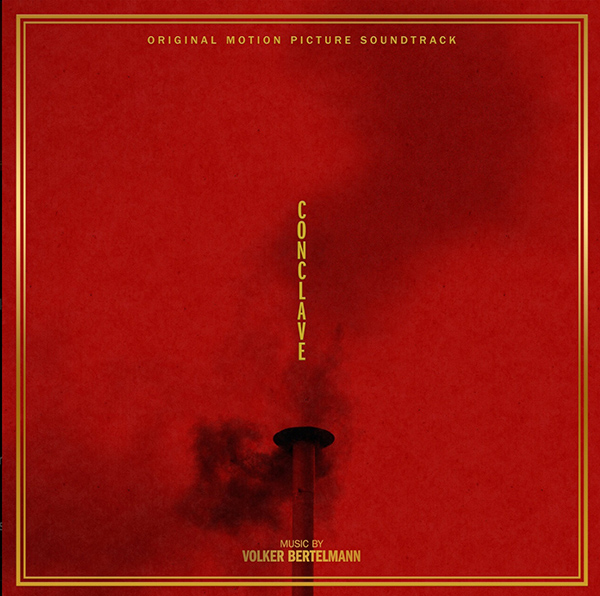
Volker Bertelmann, “Conclave (Original Motion Picture Soundtrack)”
Conclave (Soundtrack) – Volker Bertelmann: This is a superb sounding recording, sourced from Tidal in a 48 kHz/24-bit stream. During the overture, the music startles the listener with some very deep bass, which the SourcePoint 888 speakers handled effortlessly. The score uses a lot of strings, and an acoustic instrument called a Cristal Baschet, which is played with wet hands.
Getting back to the low end, I thought my subwoofer was still hooked up from the system I removed to audition the SourcePoint speakers, but it was inert. To make sure it was not interacting with the SourcePoint speakers, I moved it to another room. The deep and musical bass remained, and it was as impressive and musical a low end as I’ve heard from a floor-standing speaker in this room.
And I must add, Conclave is some of the best demo material I have ever heard.
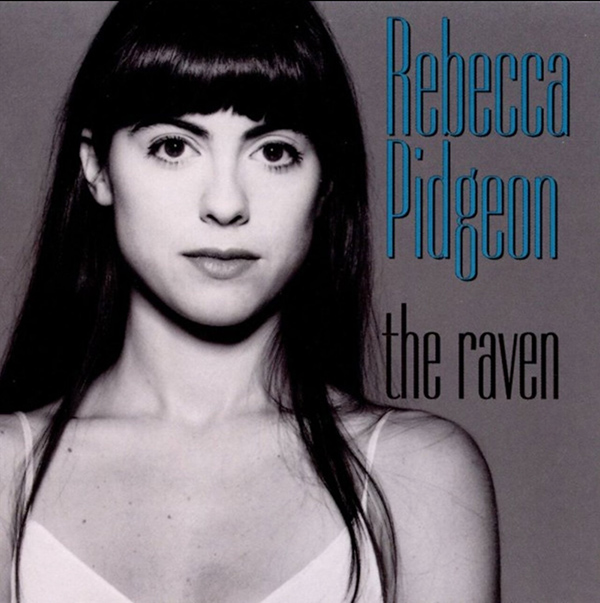
Rebecca Pidgeon, “The Raven”
The Raven – Rebecca Pidgeon: I always come back to this terrific vocal recording, for its realism and striking sense of space of the recording venue. The SourcePoint 888 speakers put Ms. Pidgeon dead center between the speakers, with the accompanying musicians accurately scattered left to right. It was an uncannily realistic soundstage. This was a FLAC file, 88.2 kHz/16-bit.
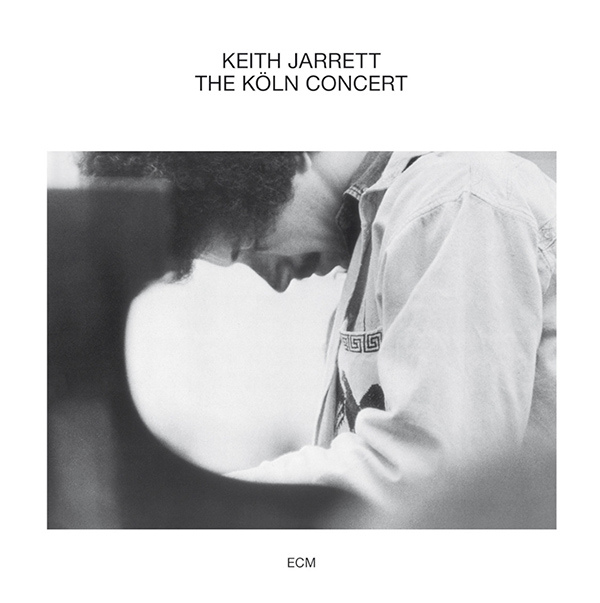
Keith Jarrett, “The Köln Concert”
Keith Jarrett – The Köln Concert: A 1975 ECM recording that still sounds great and was one of the most influential jazz recordings of the decade. ECM engineers captured the sound of a live piano in challenging conditions, and the sound and the music are both what I consider masterpieces. The SourcePoint 888 speakers captured the hammer strikes of the piano with accuracy. A very ‘you are there’ recording beautifully rendered by this Andrew Jones creation.
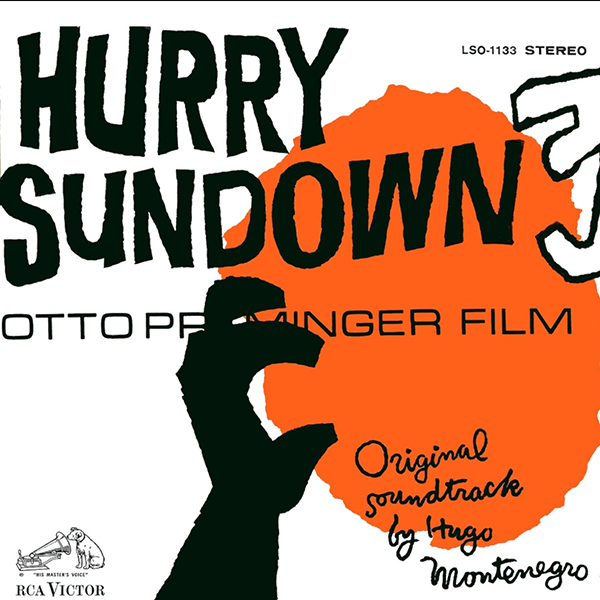
Hugo Montenegro and His Orchestra, “Hurry Sundown (Original Film Soundtrack)”
Hurry Sundown (Soundtrack – Hugo Montenegro). I play this CD (16 kHz/44-bit) on every speaker I review. It’s a wonderful soundtrack from a dreadful film. It happens sometimes. Some jazz, some epic sounding music, and lovely strings. The saxophone solos are stunning. There’s also some choral work in the film that the speakers handle with aplomb. Instruments and voices are solidly anchored in their positions in an unbroken space from left speaker to right speaker and all the points in between. RCA had its ups and downs over the years, but the engineering here is really first-class. Plenty of dynamic range, and at even loud volume, the speakers never falter by putting a veil over the detail in this recording.
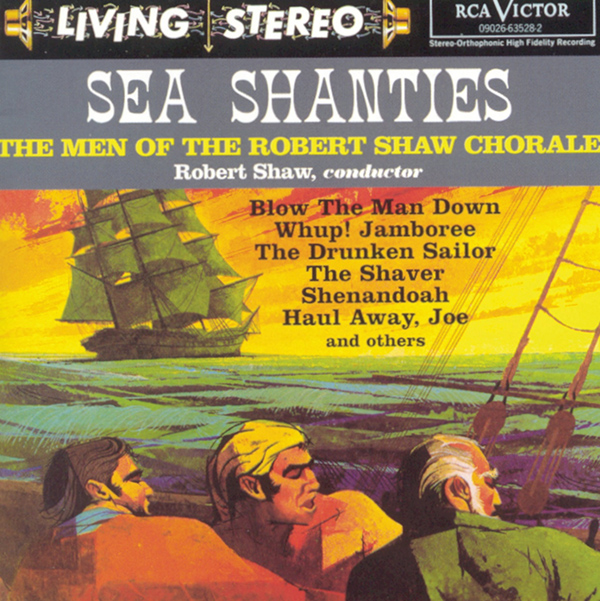
Robert Shaw, “Sea Shanties – The Men of the Robert Shaw Chorale”
Sea Shanties – The Men of the Robert Shaw Chorale; When I was young, my dad listened to this on an LP. The CD was remastered from the original 1961 analog tape, and it still is rousing and involving. Nobody could arrange for chorus like Robert Shaw, and although most of his output was classical, he and his chorus obviously had some fun with this recording. My favorite song on the disc is “What shall we do with the Drunken Sailor,” and the almost 70-year-old recording still has bite. The MoFi SourcePoint 888 speakers offer a very convincing performance, with the singers nicely placed between the speakers. This is another album I’ve tested many speakers with. Speakers often fail to get the imaging right. The 888 speakers hit it out of the park in my room.
It was time to move the speakers to the home theater and see how they do in a smaller space and with music and some movie sound. My theater is set up for multichannel and ATMOS, but I only listened to the SourcePoint 888 speakers in stereo. The speakers were being fed by a 100 WPC Emotiva amp, with an Anthem processor.

BBC Philharmonic Orchestra, John Wilson, “Copland: Orchestral Works, Vol. 1 – Ballets”
Copland – Orchestral Works Vol 1 – BBC Philharmonic – John Wilson: Wilson has produced four albums of Copland’s music, all available in 96 kHz/24-bit, which is what I auditioned. An excellent track is the “Appalachian Spring from the Ballet for Martha”. This is a lively recording, and the smaller room provided a more intimate sound. The strings in this work are key, and they sounded realistic and never strident, even at very loud volume.

The Abyss
Movie: The Abyss – James Cameron. Before Titanic and his other mega hits came, The Abyss, an underwater sci-fi movie. Oscar-nominated for best sound in 1989, I listened to it only in stereo to gauge the 888 speakers with a complicated and dense soundtrack. Normally, I have two subwoofers in my theater, but I took them out so I could hear the SourcePoint 888 speakers on their own for low bass. They sounded great, and if I were buying a pair for this room, I would sell the existing subs. As in the living room, imaging was very good, with voices centered and sound effects nicely spread between the speakers. In some scenes, the sound extended beyond the speaker boundaries, left of the left speaker, and to the right of the right channel speaker. Even at loud volumes, the speakers never sounded constricted or distorted.
Secrets Sponsor
I can now understand the enthusiasm of other reviewers, which, before hearing these speakers, I viewed with my usual skepticism. No more. The MoFi SourcePoint 888 speakers are excellent by any measure. Best speakers ever? Probably not, but they are in a small group of well- designed musical reproducers.
- Above all, sound quality and accuracy.
- Deep but musical bass.
- Smooth midrange and high frequencies.
- Inert cabinet.
- Quality of construction.
- Ease of placement.
- Excellent in a pure music system or as main speakers in a home theater system.
- Frankly, this speaker has no negatives, except for the relatively high cost, which will be above some audiophiles’ budgets.
I’ve always wanted to hear some Andrew Jones speakers, and I finally had my chance. I think these MoFi SourcePoint 888 speakers are a triumph of design and musicality. I’ve never heard a speaker be so effortless at reproduction, even at high levels. The imaging was faultless, as was the dynamic range and frequency response. The construction of the speakers is also first-rate. I don’t see any shortcuts in the quality of the electronics or cabinets.
I’ve heard a lot of speakers, many more expensive, and sonic memory is not infallible. I’ve listened in a multitude of environments and conditions. Still, in my rooms, I’ve never heard a more impressive speaker that gets so many things right. The big things (frequency response and deep bass) but also the nuances, like the striking of a triangle in the percussion section, or the quick response time when a piano is being played rapidly. In my smaller theater, it was almost like listening to good headphones, where details you might otherwise miss are clearly heard, like the moving of a music stand or traffic outside the recording studio.
Even when played loud with challenging music or sound effects, I heard no distortion. In complex sections of music, the speakers never blurred the details.
I think the concentric driver design is a large part of the success of the MoFi SourcePoint 888 speakers. They present a coherent sound field. Usually, when listening, I’m aware of crossover points and discontinuities in frequency response. I’m often sensitive to midrange problems, and a good voice recording will expose midrange discontinuities. I’m not hearing this in either room where I auditioned these speakers.
What I do get is a very smooth and consistent wavefront that sounds like music, rather than an amalgam of parts trying to sound like one. This is no small thing, and not easily achieved. I’ve heard this from Magnepan speakers as well, but the bass had to be augmented.
At $4999.99, these are not inexpensive speakers. Yet in my estimation, they hold their own against speakers that sell for double the price or more.
The success of the speakers seems to lie in a lot of little choices made by Jones that add up to a superior product. The concentric drivers, for example, contribute greatly to the imaging precision. The bass is the result of the speaker design, the ports, and the way the speaker crossover is designed. And so on and so on.
At the end of the day, this is a relatively high-cost, high-performance reproducer of music. It excelled in both of my listening rooms, and with a wide variety of music. It’s relentless in revealing substandard recordings, and that’s as it should be. Still, some of those lesser recordings I threw at the SourcePoint 888 speakers never sounded better (or worse).
While I was finishing this review, Andrew Jones announced a new speaker, the MoFi SourcePoint V10 Master Edition. It’s a larger floor stander than the SourcePoint 888 and uses 10” drivers rather than the 8” in the SourcePoint 888. We haven’t seen pricing yet, but clearly this will be the new top of the line for MoFi.



